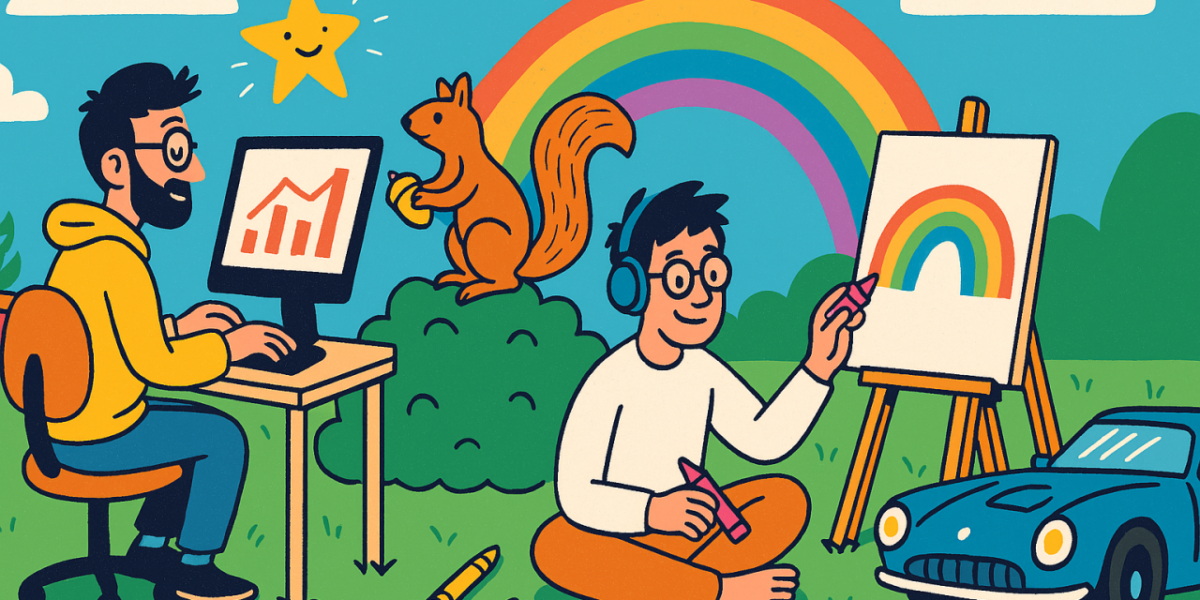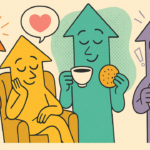I didn’t stumble into advertising for a creative high and end up allergic to dashboards. Infact, I’ve always been in digital. Data, tracking, performance — these were never the villains in my story. They were part of the thrill. A badge of being future-facing. A geek’s playground with glitter.
But somewhere between cookie trails and click paths, I started missing something: the unexpected. The joyful detours online. The little creative accidents. The pure, pointless magic of a billboard that made no sense but made your day.
Call it serendipity. Call it chaos. Call it that thing you can’t measure but will always remember.
The irony? I’ve lived in dashboards long enough to trust the data — and still, I find myself craving a little randomness.
Because everything’s become too… expected.
You order a high-protein wrap, and suddenly every platform is convinced you’ve joined some protein cult. Linger on a running shoe ad and you’re being digitally groomed for the Olympics.
Sure, it’s efficient. But it’s also like being stalked by a spreadsheet in a trench coat, like Mandrake(it’s a very Gen X memory) the magician.
Where’s the delight? The weird? The jolt of joy that has nothing to do with conversion rates and everything to do with curiosity?
We’ve built a world that optimises so well, it’s forgotten how to surprise. And in the process, we’ve turned advertising into a polite dinner guest who shows up on time, compliments the curtains, and recites facts from memory. No stories. No spark.
Even the gut — once the most powerful tool in a creative’s arsenal — now needs to be backed by five decks, a benchmark sheet, and a nervous glance at GA4.
But here’s the thing: Data doesn’t have to kill gut feel. It should augment it. Validate it. Add rigour to randomness. Not handcuff it.
We’ve mistaken optimisation for outcome. We’ve confused repetition with recall. We’ve over-indexed on what’s measurable and underinvested in what’s memorable.
And I get it. Performance works. ROI is great. But when everything is performance, nothing feels personal.
Because the ads that work hardest — the ones that sell and stick — are usually the ones that first made you feel something.
Like that imaginary digital banner that invited people to race their mouse cursor against a supercar — no prize, just pride. Or the fictional airline that let you send a postcard to the future, not to sell flights but to remind you that travel is about hope. Or the snack brand we just made up — the one that didn’t mention the product at all — and instead followed a squirrel around Mumbai for 24 hours. You had no clue what you were watching, but you couldn’t stop.
And yet, these imaginary examples — even in their made-up glory — make us smile. Make us think. Make us seek.
Because the point isn’t whether they were real. It’s that they could be. And we’d love them if they were.
These weren’t product demos. These were permission slips to play.
I know where the cookies are buried. Which is why I’m asking — let’s stop nibbling and go bake something weird again. Reset the machine. Make space for the whimsical, the wacky, the wildly wonderful.
Let a media planner throw a curveball. Let a creative crack a line that makes no sense but makes the room laugh. Let the audience discover something they weren’t already hunting down on Google.
Because when brands feel less like sales engines and more like people — people with stories, silliness, and a little sauce — that’s when marketing stops performing and starts belonging.
Maybe it’s not about abandoning the algorithm. It’s about occasionally ignoring it.
Serendipity isn’t a luxury. It’s the last standing proof that humans are still in charge.
So let’s bring back the joy of the unexpected. Let’s allow campaigns to wander off-script. Let’s design for delight, not just delivery.
We don’t need to burn the rulebook. We just need to write in the margins again.
Dashboard veteran here, making a pitch for a little mayhem: Let’s glitch the matrix — just a little. Let’s surprise ourselves again. Let’s be the reason someone smiles, not just scrolls.
Our mojo’s not lost. It’s just buried under too many KPIs. Time to dig it out.
Not for the likes. Not for the CTRs.
Just for the joy of it.
And wouldn’t it be something if an idea could be stumbled upon, admired by a few thousand strangers, maybe even acted on? Some might switch, some might smile, some might just move on — but none of it decided by an algorithm obsessed with sameness.
Because showing up without a map is sometimes the best way to be remembered.




